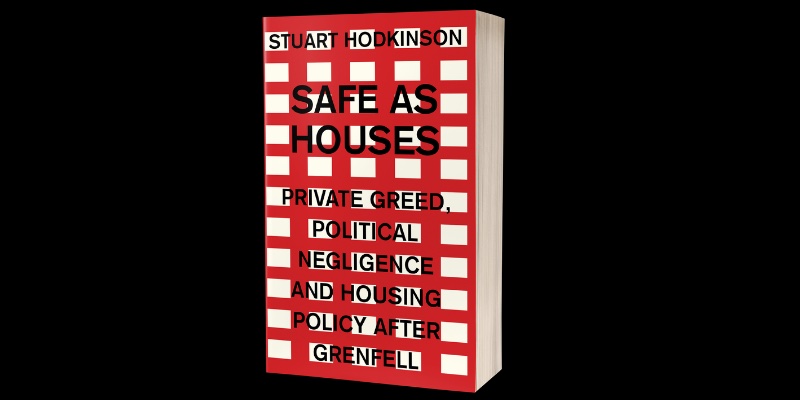Post
BOOK REVIEW | Safe as Houses
11 Jul 2023
By Stuart Hodkinson
Reviewed by Ollie Norman
The Grenfell disaster looms large in this detailed account of housing regeneration under Private Finance Initiatives (PFI) in Camden, Islington and Lambeth. Whilst never explored in detail, Hodkinson connects the failings of building safety which led to the tragic events of 14th June 2017 to an abdication of responsibility by public bodies and the introduction of perverse incentives through privatisation present in each of his case studies.
Interested in joining The London Society? Click here
The failings which he exposes are mundane and yet shocking. Anyone who has experienced the disruption and harm of a leak, or the inconvenience of delayed repairs can connect viscerally to these stories of neglect. From residents being told “it ain’t Chelsea round here”, in effect that as social housing tenants they don’t deserve any better than a bodged refurbishment, to the multiple serious breaches of gas, electrical and water safety and structural damage - the book highlights the human cost of a self-regulating environment where there are incentives for collusion and no real oversight or consequences (except for the residents).
This would be a stark enough picture, but the extent of the profiteering demonstrated in Chapter 6 throws it into even sharper relief, detailing the additional costs of private financing and mechanisms of tax avoidance which undermine the putative value for money case for PFI.
Tonally, Hodkinson’s writing is dark, angry. One telling anecdote recalls how when presented with a resident-led condition survey, Lambeth officers sought to undermine and downplay the seriousness of its findings, commenting that the resident’s board had “politicised some of these things”. So, the argument goes, the Council is aware, and is sorting them out. To those who work in local government, this book is confronting. The vacuum of accountability described is created by an attitude that ‘these things’ - which range from defective fire doors and signage to internal flooding - are someone else’s problem. When there is no-one else - or when the supposedly responsible entity is engaged in exploitative behaviour and is insufficiently scrutinised - it is hard to not feel aggrieved by the failings of an approach to regeneration which was supposed to be about improvement. This section highlights the challenges of working in the ‘public interest’. There are real challenges to achieving just outcomes for people when their problems are the result of outsourcing and a public sector which thinks of itself as benevolent but constrained, and ultimately less responsible.
The book does not delve too far into the institutional context which enabled such a situation to unfold, but what it does highlight is the importance of listening with genuine intent to the problems of residents, and of removing the cost incentive from the question of safety.
The case studies explored in Safe as Houses have not yet led to a tragedy on the scale of Grenfell, but the poor state of housing in this country needs urgent attention and five years after Grenfell the death of Awaab Ishak now represents the next ‘defining moment’ in an ongoing crisis. Hodkinson’s book is as timely now as it was in 2019, with its call to action and set of reforms to bring us closer to providing safe and secure homes for all.
